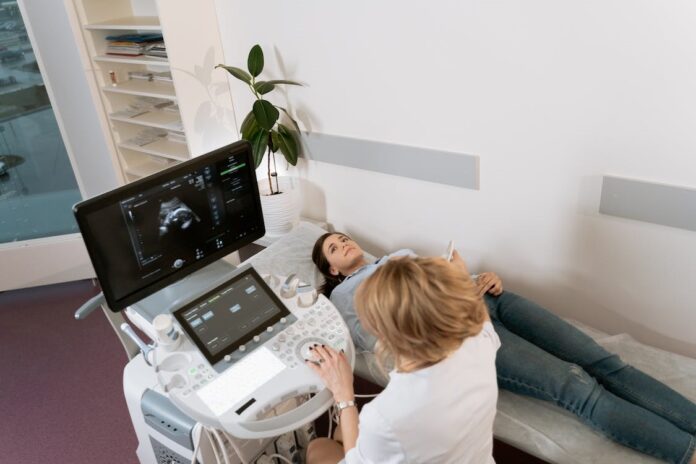Healthcare organizations play a critical role in our society, providing essential medical services and care to those in need. However, with the growing demand for healthcare services and the increasing complexity of patient care, it is challenging for these organizations to maintain a smooth and efficient workflow. The importance of a seamless workflow in healthcare organizations cannot be overstated, as it directly impacts patient care quality.
In today’s fast-paced and ever-changing healthcare landscape, organizations constantly seek innovative ways to improve their workflow and increase efficiency. By streamlining processes and maximizing productivity, healthcare organizations can ensure they provide the best possible care to their patients. The challenge, however, lies in identifying the strategies and tools that will have the greatest impact. This article will explore four strategies proven to boost workflow in healthcare organizations.
1) Implementation of Automated Processes
One of healthcare organizations’ biggest challenges is the increasing workload and demands on healthcare providers. With so many tasks to complete, it can be challenging to find the time to focus on the most important tasks, such as patient care.
Implementing automated processes can help alleviate some of this workload by streamlining routine tasks, freeing up time and resources for healthcare providers.
Electronic Health Records (EHR) boost workflow in healthcare organizations. The adoption of EHRs has revolutionized the way healthcare providers manage patient information, making it easier to access, update, and share vital information.
By digitizing patient records, healthcare providers can reduce the time spent on manual documentation and improve the accuracy of patient information.
EHRs can be easily accessed by multiple healthcare providers, enabling a more collaborative approach to patient care. For example, when a patient visits a specialist, the specialist can access the patient’s EHR and review their medical history, medications, and lab results. In turn, this can lead to a more informed and effective diagnosis and treatment plan.
Likewise, appointment scheduling can be automated using EHR scheduling software, allowing patients to schedule their appointments.
Prescription refills can be automated using electronic prescriptions, which can be sent directly to the pharmacy. Ultimately, this reduces the time spent on manual tasks and the risk of misinterpretation, as electronic prescriptions are less likely to be misread than handwritten prescriptions.
Another benefit of EHRs is that they can be integrated with other healthcare technologies, such as Laboratory Information Systems (LIS).
A cloud-based lab information system is a computerized system that helps manage laboratory processes, including sample tracking, test ordering, and result reporting.
By integrating EHRs and LIS technology, healthcare organizations can reduce the risk of data errors and improve the flow of information between the laboratory and clinical departments, leading to a more efficient and effective workflow.
2) Provision of Adequate Training and Resources
Adequate training is crucial for healthcare providers to effectively use new technologies and processes, such as EHRs and telemedicine. It includes training on how to use the technology and incorporate it into the workflow.
Examples of training can include hands-on training sessions on using EHRs, LIS, and other technologies. Online tutorials and webinars, collaborative learning opportunities such as peer-to-peer training and mentorship programs, and on-the-job training and support can aid in this process.
In addition to training, healthcare workers also need access to the right resources to deliver care effectively.
It includes access to equipment, such as laptops and mobile devices, as well as software and apps that enable them to perform their duties.
By providing healthcare providers with the training and resources they need, organizations can empower them to deliver quality care and improve their workflow.
Eventually, it’ll have a positive impact on patient outcomes, as well as on the overall efficiency and effectiveness of the organization.
3) Encouragement of Collaboration and Communication
Collaboration and communication are key components of effective workflow in healthcare organizations. By encouraging collaboration and communication among healthcare providers, organizations can foster a team-oriented approach to patient care, leading to improved patient outcomes and a more efficient workflow.
A Stanford study found that participants working in a collaborative environment could work 64% longer than their solitary peers. They also reported a higher success rate, higher engagement, and lower fatigue levels.
One way to encourage collaboration and communication is by promoting a culture of openness and transparency. And this includes encouraging healthcare providers to share information and ideas and work together to solve problems and make decisions.
Incorporating team meetings and huddles into the workday can encourage collaboration and communication. These regular meetings allow healthcare providers to discuss patient cases, share information, and work together to solve problems and make decisions.
4) Incorporation of Telemedicine
Telemedicine is a growing trend in healthcare, offering patients greater access to medical services and care, regardless of location. It refers to the remote diagnosis and treatment of patients using telecommunications technology. By incorporating telemedicine into patient care, healthcare organizations can provide patients with greater convenience and accessibility.
Telemedicine can facilitate virtual consultations between healthcare providers and patients, eliminating the need for patients to travel to a healthcare facility. It saves time, reduces the workload on healthcare workers, and makes it easier for patients to access care, particularly those in rural or remote areas.
Incorporating telemedicine into patient care also has the potential to reduce costs for both healthcare organizations and patients. By reducing the need for travel and in-person visits, telemedicine can lower healthcare costs and improve the efficiency of care delivery.
Telemedicine can be integrated into EHRs, allowing seamless communication between healthcare providers and patients. This integration can also improve the flow of information, as telemedicine consultations can be easily documented in the patient’s EHR.
Conclusion
Boosting workflow in healthcare organizations is a complex and multi-faceted challenge. However, by implementing effective strategies, such as utilizing EHRs, incorporating telemedicine, encouraging collaboration and communication, and providing adequate training and resources, organizations can significantly improve the flow of care and enhance the overall quality of patient services.
Adopting new technologies and processes can be a daunting task for healthcare organizations. But with the right approach and support, it can be a transformative experience that leads to better patient outcomes and a more efficient and effective healthcare system.
Nonetheless, boosting workflow is an ongoing process, and organizations must be willing to continuously evaluate and improve their processes to ensure they deliver the best possible care to their patients.
By adapting to change and incorporating advancements, healthcare organizations can be influential in molding the future of healthcare and enhancing patients’ lives globally.
Read Also
- How to Drive Growth Through Customer Centricity in HealthcareThe world of healthcare is changing in big ways. Consumers are now stepping up and taking charge of their health journeys. This change is happening now for important reasons. The U.S. health and wellness market is huge, projected to be over $6 trillion in 2025. This growth is fueled by rising out-of-pocket costs and more… Read more: How to Drive Growth Through Customer Centricity in Healthcare
- Maximizing Digital Reach for Podiatry Clinics in Local HealthcareMaximizing Digital Reach for Podiatry Clinics in Local Healthcare As the healthcare industry evolves, mobile marketing becomes indispensable for practitioners. Podiatry clinics, focusing on foot and ankle care, must adapt to digital strategies to engage patients effectively. Implementing tailored SEO practices is crucial for these clinics to thrive in an increasingly competitive market. Digital marketing… Read more: Maximizing Digital Reach for Podiatry Clinics in Local Healthcare
- Leveraging Virtual Medical Assistants to Maximize Operational Efficiency in HealthcareIn the increasingly complex and fast-paced world of healthcare, operational efficiency is critical. Doctors and healthcare administrators are faced with numerous challenges, from managing patient scheduling and medical billing to adhering to stringent regulatory compliance and insurance claims processing. These tasks, while essential, often divert time and resources away from the core mission of providing… Read more: Leveraging Virtual Medical Assistants to Maximize Operational Efficiency in Healthcare
- Optimizing CT Protocols: The Hidden Key to Efficiency and Cost Savings in RadiologyIntroduction: Why CT Protocol Optimization Matters Computed Tomography (CT) is a cornerstone of modern diagnostic imaging, providing critical information across nearly every medical specialty. However, maximizing the value of CT — both clinically and financially — requires more than just advanced hardware. The real secret lies in the optimization of CT protocols. When CT protocols… Read more: Optimizing CT Protocols: The Hidden Key to Efficiency and Cost Savings in Radiology
- Hospital Discharge Accuracy Improves With Daily Advisor InvolvementThe hospital discharge process has a big effect on patient recovery, hospital efficiency, and finances. It requires careful planning and clear communication between team members to make sure patients get the right care when they leave the hospital. Having physician advisors involved at this stage can improve the discharge process by spotting problems that need… Read more: Hospital Discharge Accuracy Improves With Daily Advisor Involvement






